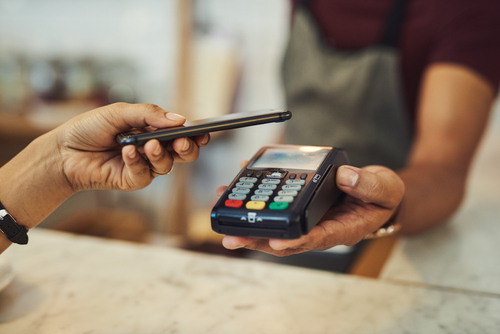Paiement mobile : 45 millions d’opérations en 2019
L’usage du mobile en tant que moyen de paiement pour effectuer des achats du quotidien reste extrêmement marginal, souligne l’Observatoire sur la sécurité des moyens de paiement dans son dernier rapport annuel. En effet, le paiement mobile qui devait progressivement se substituer au paiement par carte, a atteint 794 millions d’euros en 2019, contre 600 milliards pour les paiements par carte. Plus précisément, les paiements mobiles ont représenté 45 millions d’opérations en 2019, contre 11 millions en 2018.
Si ces hausses peuvent paraître impressionnantes, ce moyen de paiement ne représentait l’an dernier que 0,18 % du total des transactions en valeur et 0,38 % en volume.
La carte reste le moyen de paiement ultra-majoritaire en France
Le paiement par carte bancaire rencontre toujours plus de succès auprès des Français. La crise sanitaire et le relèvement du plafond sans contact de 30 à 50 euros ont d’ailleurs contribué à cet engouement.
En 2019, avant la pandémie de Covid-19, le paiement par carte représentait près de la moitié des paiements scripturaux effectués dans la zone euro et 57 % au sein de l’Union européenne, selon la Banque centrale européenne (BCE). Ce mode de paiement creuse ainsi l’écart avec les autres : le virement (23,3 % dans l’UE), le prélèvement (17,4 %), le chèque (1,4 %), la monnaie électronique (1,3 %).
L’enjeu de la sécurité du paiement mobile
Selon l’Observatoire, les acteurs présents sur le marché du paiement mobile déploient des dispositifs qui ne sont pas tous équivalents en termes de niveau de sécurité atteint. Il leur recommande de mettre en œuvre des dispositifs sécurisant l’enrôlement des utilisateurs au sein des applications de paiement présentes sur les téléphones mobiles, mais aussi de prévenir et d’identifier les transactions à risque.
Il faut savoir que d’ici mars 2021, de nouvelles règles techniques visant à améliorer la sécurité des comptes bancaires et les achats sur Internet face aux risques croissants liés à la cybercriminalité vont s’appliquer. Celles-ci sont issues de la directive révisée sur les services de paiement ou DSP2 qui met en évidence plusieurs concepts, dont l’authentification forte, c’est-à-dire l’usage d’une combinaison de facteurs pour s’assurer que la personne qui tente de se connecter à sa banque en ligne ou de payer par carte n’est pas un usurpateur.
Les géants du web et les startups semblent avoir pris conscience que l’avenir du paiement mobile passera par la sécurité. Ainsi, ce mode de paiement devrait poursuivre sa croissance dans les prochaines années.
